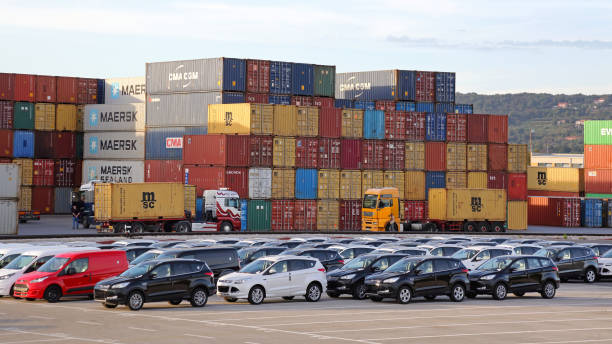In our interconnected world, the need to transport goods, including vehicles, across international borders has become a common practice. When it comes to cars, the process of international shipping involves a series of well-coordinated steps to ensure the safe and efficient transport of vehicles from one country to another. Let’s explore the intricacies of how cars are shipped internationally.
1. Preparation for Shipping:
Before a car embarks on its international journey, thorough preparation is essential. This includes documentation such as proof of ownership, customs declarations, and compliance with environmental and safety standards. Additionally, the vehicle may need to be thoroughly cleaned and inspected to meet the requirements of the destination country.
2. Choosing the Shipping Method:
There are several methods for shipping cars internationally, each with its own advantages and considerations. The two primary methods are Roll-on/Roll-off (RoRo) and Container Shipping. RoRo involves driving the car onto a specialized vessel, while Container Shipping involves placing the vehicle within a secure container. The choice between these methods depends on factors like cost, destination, and the level of protection desired.
3. Documentation and Customs Clearance:
Navigating the bureaucratic landscape of international shipping requires meticulous attention to documentation. This involves providing the necessary paperwork to clear customs at both the departure and arrival ports. Customs officials review documentation to ensure compliance with import/export regulations, tariffs, and other legal requirements.
4. Securing the Vehicle:
Once the documentation is in order, the next step is to secure the vehicle for transit. In RoRo shipping, the car is driven onto the vessel and lashed down to prevent movement during the voyage. For Container Shipping, the vehicle is carefully loaded into a secure container, often with additional protective measures to prevent damage.
5. Transportation by Sea:
The actual sea journey is a critical phase of international car shipping. Specialized vessels designed for vehicle transport ensure the safe and secure transit of cars across oceans. Shipping companies employ advanced tracking systems to monitor the location and condition of vehicles during the journey.
6. Arrival at the Destination Port:
Upon reaching the destination port, the vehicle undergoes a process similar to departure, involving customs clearance and inspection. Proper documentation is once again crucial at this stage to ensure a smooth entry into the destination country.
7. Transport from Port to Destination:
Once cleared, the vehicle needs to be transported from the port to its final destination. This may involve hiring local transport services or utilizing additional shipping methods, depending on the distance and infrastructure of the destination.
Conclusion:
International car shipping is a complex but well-organized process that requires careful planning and adherence to regulations. From meticulous preparation to choosing the right ship vehicles and navigating customs, each step plays a crucial role in ensuring a vehicle’s safe and timely arrival at its international destination. Understanding these steps is essential for both individuals and businesses involved in the global movement of automobiles.








